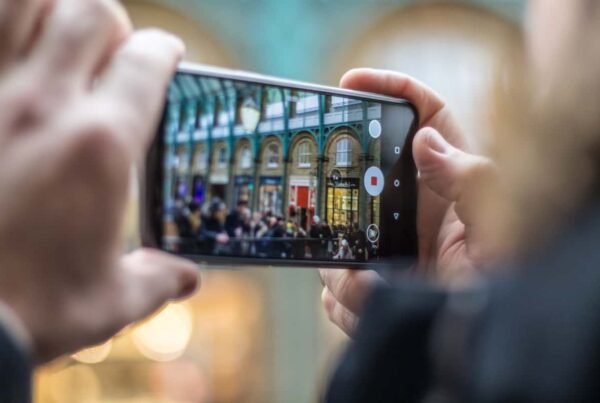Earlier this month, while on the train on my way to Milan, I noticed a poster that made me do a double take. This advertisement for Satispay – an Italian app that allows users to make payments via their smartphones – featured an illustration more apt for an article on tech addiction and the dark sides of technology. Take a close look:

Every character is bent down, staring intently at their smartphones. Their posture is so terrible, it immediately reminded me of Amy Cuddy’s op-ed piece in the New York Times: “Your iPhone Is Ruining Your Posture — and Your Mood.” The cute dog is trying to get the attention of its owner, but every single human featured in this illustration is completely captivated by their phones, unaware of the environment around them.
Thing is, I see a real life version of this illustration on a daily basis. Right as I type this, sitting in a coworking space, a man in front of me is hunched forward, his elbows on the kitchen counter, while he stares at his phone, headphones in. To my left, there are two men sitting on a small couch, looking down at their phones: one is typing, the other scrolling. This tableau has been going on for at least 15 minutes, every time I look up, the three men are in the exact same position. Why is this an item of concern?
Amy Cuddy’s viral TED Talk “Your body language may shape who you are” (almost 50 million views to date) catapulted her definition of the “power pose” into the public eye. In her op-ed for the New York Times, Cuddy argues that:
The average head weighs about 10 to 12 pounds. When we bend our necks forward 60 degrees, as we do to use our phones, the effective stress on our neck increases to 60 pounds — the weight of about five gallons of paint. When Mr. August started treating patients more than 30 years ago, he says he saw plenty of “dowagers’ humps, where the upper back had frozen into a forward curve, in grandmothers and great-grandmothers.” Now he says he’s seeing the same stoop in teenagers. When we’re sad, we slouch. We also slouch when we feel scared or powerless.
Cuddy continues:
There appears to be a linear relationship between the size of your device and the extent to which it affects you: the smaller the device, the more you must contract your body to use it, and the more shrunken and inward your posture, the more submissive you are likely to become.
Since reading her article (I highly recommend you read the full piece here), I have been making conscious strides to spend less time looking at my phone – and to hold my head and back straight while I do. It does make a world of difference.
Earlier this month, I encouraged you to start tracking how much time you spend on your phones (in this post); last week I shared some of the strategies I use to spend less time on my phone (here).
I would love to hear from you, about your experiences so far. I created a form on Google Docs with a couple of questions, where you could share your impressions. The goal is to collect your testimonies for a wrap-up post that I will publish next Tuesday. You could decide to submit this anonymously, too. Here is the form: https://goo.gl/forms/sdZ7I2TDnXbBYYIt2
I look forward to hearing from you!
xo
Elena



